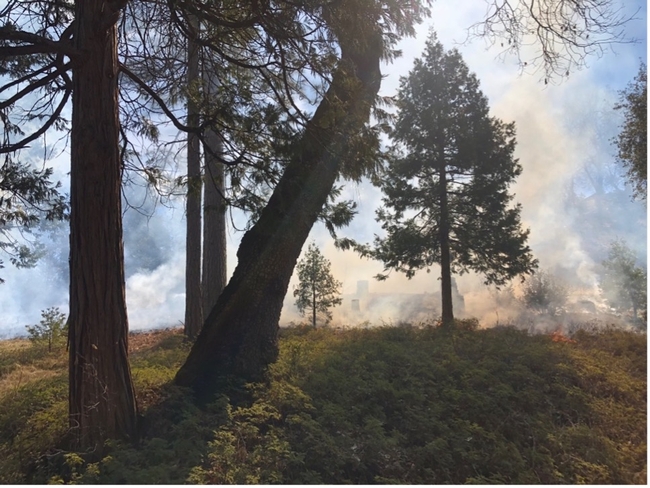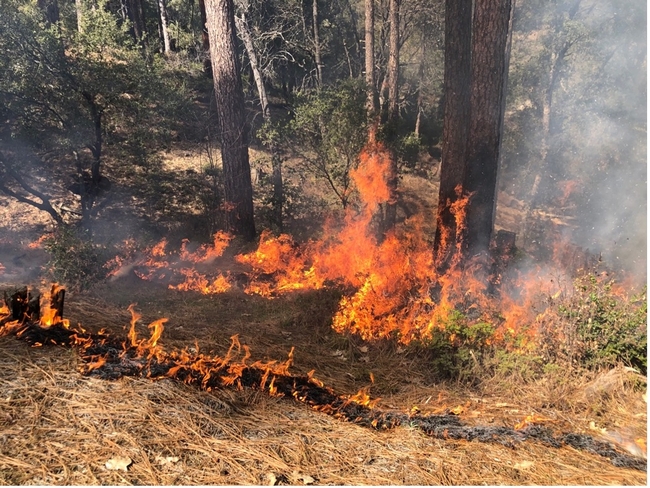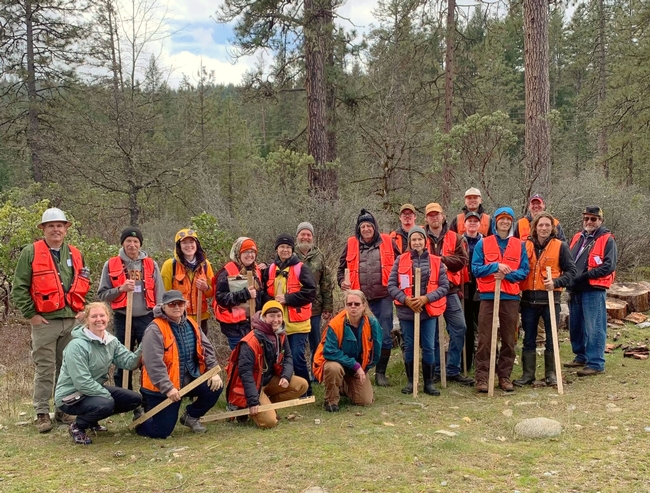Forty acres of forestland- that's how much Drew Nelson and his wife lost during the Creek fire of 2020. “We had intentions of rebuilding there,” he told me, but “it was a really tough time after the fire.” They decided to move to a plot nearby, where they could continue working towards their forest management goals. I spoke with Nelson, who accomplished a five-acre prescribed burn on the new site near Alder Springs this past February. Aided by the Sierra Resource Conservation District (SRCD) and his local Prescribed Burn Association (PBA), idea became reality. Using fire as a tool for forest management isn't a new concept, but after nearly 100 years of statewide fire suppression policies, the practice is surging in popularity amongst landowners like Nelson.
Good fire, intentional in placement and low in burn severity, has historically been a tool used by indigenous people to manage landscapes. Forestland like Nelsons that surrounds Fresno County, along with the rest of California's forests, has been shaped by fire for thousands of years. The ecosystem is thereby adapted to ‘good' fires: ignited by both humans and lightning, a fact that is becoming more well-known amongst the public. Nelson even shared that on a recent trip to Yosemite National Park, he and his wife noticed plaques like the one below which help the public learn about proper forest management. For Nelson, fire is a tool he can use to “Help [him] get back into that management cycle, that fire cycle.”
Once a private landowner decides to go through with a prescribed burn on their property, then comes the process of applying for a burn permit. Additionally, obtaining an air quality permit through the California Air Resources Board (CARB) is required. If a landowner plans to burn between May 1st and the end of the declared fire season, securing a CALFIRE permit is also necessary. For many private landowners, permitting can be a hurdle.
Nelson credited the Sierra Resource Conservation District for their assistance at this stage, explaining: “I'm not a fire professional, I'm not a firefighter. A broadcast burn, there's a lot of technicality to it…So I was really lucky to get involved with the Sierra RCD.” He continued, saying he and the SRCD “Identified the containment lines…and got CALFIRE involved. We talked with them [CALFIRE], we showed them our plan. They checked back in before and after the burn.” When applying for burn permits, landowners can lean on local natural resource professionals like local RCD offices. Once a permit is approved, then comes time for the burn to be carried out.
Though he had all the technical approval for his burn, Nelson wanted to make sure his neighbors were aware of project. Prescribed burns, which clear out surface fuels, reduce the chances of a wildfire developing into a high severity fire. High severity fires kill trees by spreading quickly, and are thereby difficult to contain. Nelson's community has experience with those kinds of fires, and he wanted to make sure his neighbors knew the nearby smoke was intentional. And he expressed that the reception was remarkably positive: “When I mentioned that I want to do a prescribed burn…I mean, it was all two thumbs up. Everybody was very supportive; people understand the need for prescribed fire.”
With all the bases covered, Nelson also had to go through a day of burn notification process with CARB. Once that was completed, the burn went ahead as scheduled. Nelson also had folks from the Sierra RCD, Southern Sierra PBA, and a California Conservation Corps crew on the ground for assistance. Now, two months later, Drew notices the results- “The areas we burned…I'm starting to see it. Things coming back, and everything is so lush. Super green. The deer love it, the turkey love it. It's refreshing for the forest.”
Management projects such as Nelson's can take a village, and community support can certainly ease the load that individual landowners need to carry. Connecting landowners like Nelson to professional resources to help with permit applications, broadcast burns, or other activities moves larger goals closer to fruition. One resource for landowners is coming straight to Fresno County. Beginning May 3rd, the University of California, Cooperative Extension is hosting an online Forest Stewardship workshop series. The workshop covers a wide range of topics, from cost-share programs to forest and fire ecology. Fresno cohort members will also be eligible for a free site visit from an RPF, CA Certified Burn Boss, or Certified Range Manager who can help them develop a management plan that can promote a healthy and resilient forest legacy.
Legacy, Nelson said, laughing, “Is a bit of a trigger word. That's my goal…I don't want this to grow back up as brush.” I'd be surprised if his wanting for the forest's return to a natural, fire-adapted cycle makes him an anomaly amongst Fresno County landowners. “I have dreams,” he voiced, “of what this [the forest] can look like. I feel like now is the time to be hands-on…it's so that later, I can have that hands-off approach.”
Landowners in Fresno, Madera, and Mariposa counties are encouraged to sign up for the UCCE Forest Stewardship Workshop here. For more information, contact Kim Ingram at kcingram@ucanr.edu.



